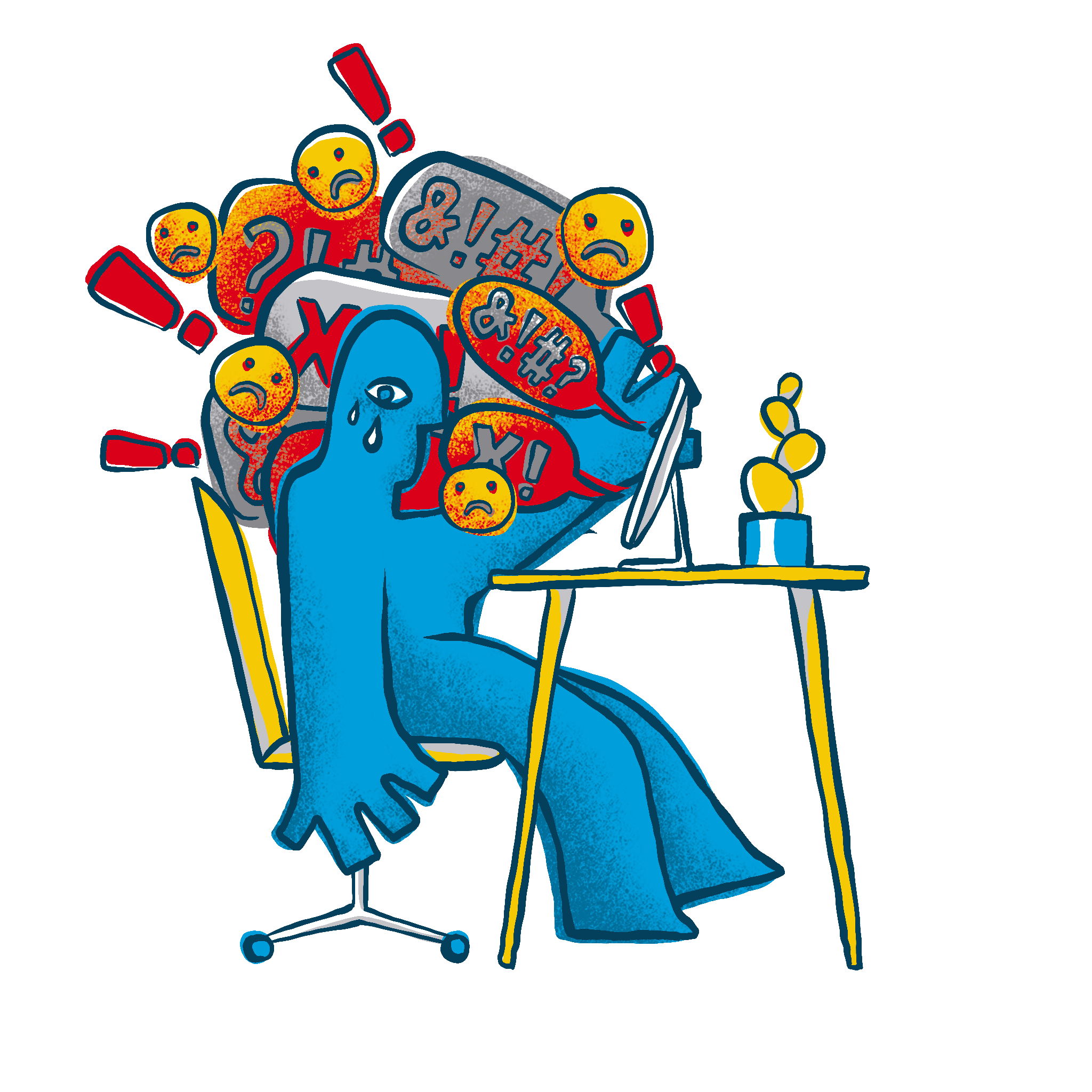
Understanding hate speech
What is hate speech?
In common language, “hate speech” refers to offensive discourse targeting a group or an individual based on inherent characteristics (such as race, religion or gender) and that may threaten social peace.
To provide a unified framework for the United Nations to address the issue globally, the UN Strategy and Plan of Action on Hate Speech defines hate speech as…“any kind of communication in speech, writing or behaviour, that attacks or uses pejorative or discriminatory language with reference to a person or a group on the basis of who they are, in other words, based on their religion, ethnicity, nationality, race, colour, descent, gender or other identity factor.”
However, to date there is no universal definition of hate speech under international human rights law. The concept is still under discussion, especially in relation to freedom of opinion and expression, non-discrimination and equality.
While the above is not a legal definition and is broader than “incitement to discrimination, hostility or violence” – which is prohibited under international human rights law -- it has three important attributes:
![]() Hate speech can be conveyed through any form of expression, including images, cartoons, memes, objects, gestures and symbols and it can be disseminated offline or online.
Hate speech can be conveyed through any form of expression, including images, cartoons, memes, objects, gestures and symbols and it can be disseminated offline or online.
![]() Hate speech is “discriminatory” (biased, bigoted or intolerant) or “pejorative” (prejudiced, contemptuous or demeaning) of an individual or group.
Hate speech is “discriminatory” (biased, bigoted or intolerant) or “pejorative” (prejudiced, contemptuous or demeaning) of an individual or group.
![]() Hate speech calls out real or perceived “identity factors” of an individual or a group, including: “religion, ethnicity, nationality, race, colour, descent, gender,” but also characteristics such as language, economic or social origin, disability, health status, or sexual orientation, among many others.
Hate speech calls out real or perceived “identity factors” of an individual or a group, including: “religion, ethnicity, nationality, race, colour, descent, gender,” but also characteristics such as language, economic or social origin, disability, health status, or sexual orientation, among many others.
It’s important to note that hate speech can only be directed at individuals or groups of individuals. It does not include communication about States and their offices, symbols or public officials, nor about religious leaders or tenets of faith.
Challenges raised by online hate speech
We must confront bigotry by working to tackle the hate that spreads like wildfire across the internet.”
ANTÓNIO GUTERRES, United Nations Secretary-General, 2023

Misinformation spreads faster when we’re upset. Pause and #TakeCareBeforeYouShare.

The growth of hateful content online has been coupled with the rise of easily shareable disinformation enabled by digital tools. This raises unprecedented challenges for our societies as governments struggle to enforce national laws in the virtual world's scale and speed.
Unlike in traditional media, online hate speech can be produced and shared easily, at low cost and anonymously. It has the potential to reach a global and diverse audience in real time. The relative permanence of hateful online content is also problematic, as it can resurface and (re)gain popularity over time.
Understanding and monitoring hate speech across diverse online communities and platforms is key to shaping new responses. But efforts are often stunted by the sheer scale of the phenomenon, the technological limitations of automated monitoring systems and the lack of transparency of online companies.
Meanwhile, the growing weaponization of social media to spread hateful and divisive narratives has been aided by online corporations’ algorithms. This has intensified the stigma vulnerable communities face and exposed the fragility of our democracies worldwide. It has raised scrutiny on Internet players and sparked questions about their role and responsibility in inflicting real world harm. As a result, some States have started holding Internet companies accountable for moderating and removing content considered to be against the law, raising concerns about limitations on freedom of speech and censorship.
Despite these challenges, the United Nations and many other actors are exploring ways of countering hate speech. These include initiatives to promote greater media and information literacy among online users while ensuring the right to freedom of expression.

